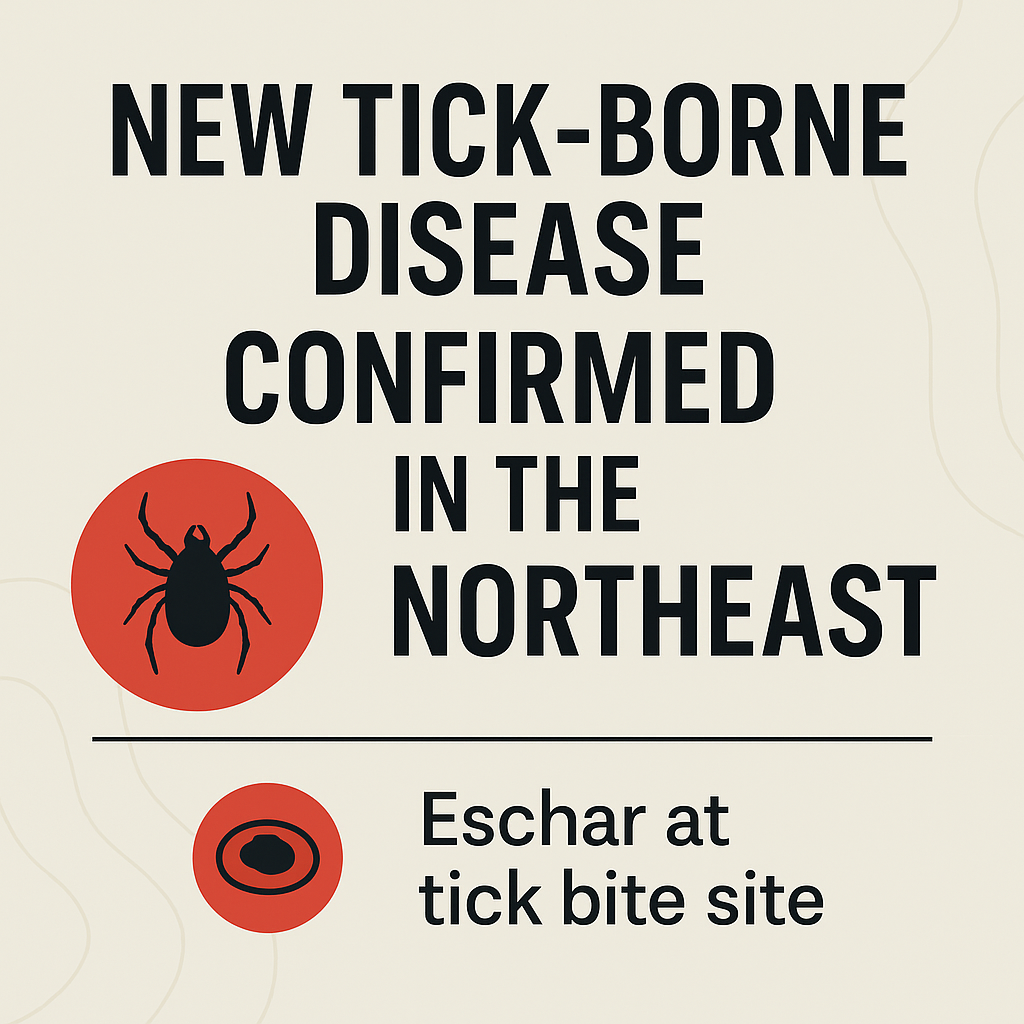Another tick-borne disease has officially arrived in the Northeast.
Last week, the Connecticut Agricultural Experiment Station (CAES) confirmed the first locally acquired human case of Rickettsia parkeri rickettsiosis in the state.
For those of us treating complex tick-borne infections, this is a critical shift. R. parkeri, a spotted fever group Rickettsia, has previously been limited to the Southeast U.S. But its vector—the Gulf Coast tick—is now established in Connecticut, New York, and New Jersey, marking a new phase in the ongoing expansion of tick-borne pathogens in the region.
What Is Rickettsia parkeri?
R. parkeri is a close relative of Rickettsia rickettsii, the causative agent of Rocky Mountain spotted fever (RMSF)—one of the deadliest tick-borne infections in North America.
The difference?
R. parkeri rickettsiosis tends to present with milder symptoms than RMSF, often including:
- Fever
- Eschar at the site of the tick bite
- Headache
- Muscle aches
- Rash
That may sound reassuring, but clinical recognition is still a major challenge, especially in regions like New England where this pathogen wasn’t considered endemic—until now.
️ How Did the Gulf Coast Tick Get Here?
The Gulf Coast tick (Amblyomma maculatum) was once restricted to states bordering the Gulf of Mexico and the southern Atlantic coast. But:
- Climate change
- Reforestation
- Bird migration patterns
- Increased commerce and human mobility
…are all playing a role in pushing its range northward.
According to Dr. Goudarz Molaei of Yale School of Public Health, the first established population in Connecticut was discovered in Fairfield County in 2021—with 30% of those ticks infected with R. parkeri.
Since then, even higher infection rates have been documented in New York and New Jersey.
⚠️ What This Means for Clinicians
This isn’t just another footnote in the tick-borne disease literature.
It’s a call to action.
- Misidentification is a real risk. The Gulf Coast tick resembles the American dog tick (Dermacentor variabilis), the primary vector of RMSF in the Northeast.
- Standard panels might not catch it. Most diagnostic tests don’t screen for R. parkeri.
- Mild symptoms may lead to underdiagnosis or missed early treatment.
If you’re a clinician treating patients with suspected Lyme or RMSF-like illness—especially in Connecticut, New York, or New Jersey—this pathogen needs to be on your radar.
How to Stay Ahead
The landscape of tick-borne disease is evolving faster than most practices can keep up with.
Lyme is no longer the only threat.
We now face:
- Borrelia miyamotoi
- Babesia microti
- Anaplasma phagocytophilum
- Powassan virus
- Ehrlichia ewingii
- Now, Rickettsia parkeri
And that list is only growing.
For years, I’ve worked to give clinicians the tools, mentorship, and real-world clinical guidance they need to lead in this complex space.
That’s exactly why I created the LDPC — Lyme Disease Practitioner Certification.
We don’t just teach Lyme.
We train clinicians to recognize and treat the full ecosystem of tick-borne illness with confidence, case-based mentorship, and protocols that work in the real world.
Final Thoughts
Tick-borne illness isn’t slowing down—and neither should we.
If you’re a healthcare professional seeing increasingly complex presentations…
If you’re a patient wondering why no one has connected the dots…
If you’re tired of the guesswork…
Now is the time to step up.
Let’s change the standard of care—together.
To learn more about the LDPC and upcoming training opportunities, visit www.theLDPC.com or reach out directly.
Stay aware. Stay prepared. And most of all—stay curious.



